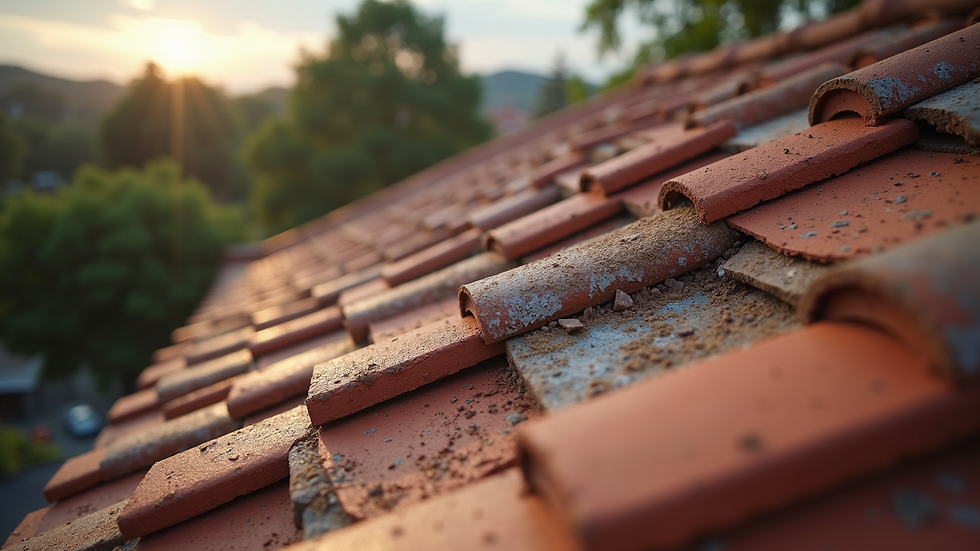Steps to Professional Roof Restoration
- willisonmarketing
- 2 days ago
- 4 min read
When your roof shows signs of wear or damage, it’s important to act quickly. Restoring your roof can save you money and stress in the long run. I want to walk you through the essential steps of roof restoration processes. This way, you’ll know exactly what to expect and how to prepare. Whether you own a home or a business, these steps will help you get your roof back in top shape.
Understanding Roof Restoration Processes
Roof restoration is more than just a quick fix. It involves a series of careful steps to bring your roof back to life. The goal is to extend the life of your roof and protect your property from the elements. Here’s a simple breakdown of what happens during roof restoration:
Inspection and Assessment
The first step is a thorough inspection. This helps identify all the issues, from minor cracks to major damage. A professional will check for leaks, broken tiles, rust, and other problems. This step is crucial because it guides the entire restoration process.
Cleaning the Roof Surface
Dirt, moss, and debris can hide damage and reduce the effectiveness of repairs. Cleaning the roof ensures that the surface is ready for treatment. This usually involves pressure washing or soft washing, depending on the roof type.
Repairs and Replacement
After cleaning, damaged areas are repaired. This might include replacing broken tiles, fixing leaks, or sealing cracks. The goal is to restore the roof’s integrity before applying any coatings.
Applying Protective Coatings
A protective coating is applied to seal the roof and protect it from future damage. These coatings can reflect sunlight, reduce heat, and prevent water penetration. This step adds years to your roof’s life.
Final Inspection and Maintenance Advice
Once the restoration is complete, a final inspection ensures everything is done correctly. You’ll also get advice on how to maintain your roof to keep it in good condition.

Cleaning the roof surface is a key step in the restoration process.
Preparing for Roof Restoration Processes
Preparation is key to a smooth roof restoration. Here’s what you should do before the work begins:
Clear the Area
Remove any outdoor furniture, plants, or decorations near the house. This protects your belongings and gives workers easy access.
Check Weather Forecast
Roof restoration requires dry weather. Schedule the work when no rain is expected for at least 48 hours.
Inform Your Neighbors
Let your neighbors know about the upcoming work. This is especially important if the work might cause noise or debris.
Arrange for Safety
Make sure pets and children stay away from the work area. Safety is a top priority during roof restoration.
Discuss Details with Your Contractor
Confirm the scope of work, timeline, and costs. Clear communication helps avoid surprises.

Removing damaged tiles is part of the repair phase in roof restoration.
The Role of Professional Roof Restoration
Choosing a professional roof restoration service makes a big difference. Professionals bring experience, tools, and knowledge that ensure the job is done right. They can spot hidden problems and use the best materials for your roof type. This reduces the risk of future issues and gives you peace of mind.
Professional teams also follow safety standards and local regulations. This protects you and your property during the restoration. Plus, they often offer warranties on their work, which adds extra security.
Common Roof Restoration Techniques
Different roofs need different restoration techniques. Here are some common methods used by professionals:
Tile Roof Restoration
Broken or loose tiles are replaced. The roof is cleaned and sealed with a protective coating to prevent moss and algae growth.
Metal Roof Restoration
Rust spots are treated and removed. The metal is cleaned and coated with a rust-resistant paint or sealant.
Flat Roof Restoration
Cracks and blisters are repaired. A waterproof membrane or coating is applied to prevent leaks.
Asphalt Shingle Restoration
Damaged shingles are replaced. The roof is cleaned and treated with a protective sealant.
Each technique is tailored to the roof’s material and condition. This ensures the best results and longest lifespan.
Maintaining Your Roof After Restoration
Restoration is just the beginning. To keep your roof in great shape, regular maintenance is essential. Here are some tips:
Inspect Your Roof Twice a Year
Look for signs of damage, especially after storms.
Keep Gutters Clean
Blocked gutters can cause water damage to your roof and walls.
Trim Overhanging Branches
This prevents leaves and debris from accumulating on your roof.
Address Minor Issues Quickly
Fix small leaks or cracks before they become big problems.
Schedule Professional Inspections
A yearly check-up by a roofing expert can catch issues early.
By following these steps, you protect your investment and avoid costly repairs.
Taking the Next Step for Your Roof
Restoring your roof is a smart move to protect your property and improve its value. If you notice signs of wear or damage, don’t wait. Reach out to a trusted roofing service to get started. With the right approach, your roof can look and perform like new again.
If you want reliable help, consider contacting Roof Rescue 911. They specialize in professional roof restoration and have a strong reputation in Fort Wayne. Their team understands the local weather challenges and offers solutions that last.
Taking action now means fewer worries later. Your roof is your first line of defense against the elements. Treat it with care, and it will serve you well for years to come.


Comments